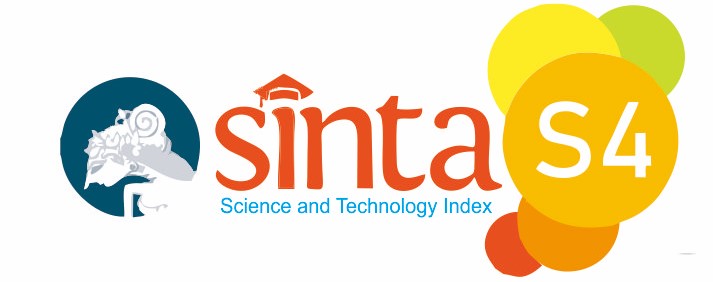PENGEMBANGAN VIDEO PEMBELAJARAN LAJU REAKSI BERBASIS STAD (STUDENT TEAMS ACHIEVEMENT DIVISION) PADA MATA PELAJARAN KIMIA KELAS XI IPA
Abstract
This research is based on the lack of activity of students in the learning process, the learning process is carried out only centered on the teacher and the media used by the teacher is only in the form of power points that have not been developed, so that students are less interested in the learning process. The purpose of this study was to develop STAD (Student Teams Achievement Division) based learning videos and determine the level of validity and practicality. This study uses the Research and Development (R&D) method with a 4-D development model which includes 4 phases, including: Define, Design, Development, Disseminate. This research was carried out up to the third stage including: 1) At the Define stage, it was carried out to get an overview of the conditions in the field, 2) at the Design stage, it was carried out to design STAD (Student Teams Achievement Division) based learning videos, 3) at the Development stage This is followed by validity and practicality testing. The test subjects in this study were students of class XI MIPA-2 SMAN 1 West Sumatra. The results of the study show that: 1) STAD (Student Teams Achievement Division) based learning videos have met the valid criteria with a validation result of 89.28%. 2) the developed STAD (Student Teams Achievement Division)-based learning videos have met practical criteria with 83.75% student questionnaire results and 77.5% teacher questionnaires. The results of this study indicate that the developed STAD (Student Teams Achievement Division) based learning videos can be used as learning media for teachers and students in learning.
Keywords: Learning Videos, STAD (Student Teams Achievement Division), Laju Reaksi
Full Text:
PDFReferences
Agustini, K., & Ngarti, J. G. (2020). Pengembangan Video Pembelajaran untuk Meningkatkan Motivasi Belajar Siswa Menggunakan Model R&D. Jurnal Ilmiah Pendidikan dan Pembelajaran, 4(1), 62-78.
Anggraini, R. A., Yuhelman, N., & Ningsih, J. R. (2022). Pengembangan Media Video Animasi Menggunakan Aplikasi Kinemaster pada Materi Hidrokarbon Di SMAN 1 Inuman. Journal of Chemistry Education and Integration, 1(1), 26-33.
Azhari, U. L., & Kurniady, D. A. (2016). Manajemen Pembiayaan Pendidikan, Fasilitas Pembelajaran, Dan Mutu Sekolah. Jurnal Administrasi Pendidikan, 23(2).
Daryanto, M. R. (2012). Model Pembelajaran Inovatif. Yogyakarta: Gava Media.
Hidayat, A. A., & Uliyah, M. (2015). Buku Ajar Kebutuhan Dasar Manusia. Jakarta: Health Books Publishing.
Linda, R., Herdini, H., & Rahmaputri, Z. (2017). Interactive Multimedia Based on Autoplay Media Studio 8 for Chemistry on Rate of Reaction Topics for Class XI SMA/MA. Jurnal Pendidikan Kimia, 9(3), 341-346.
Mahartika, I., Afrianis, N., & Yuhelman, N. (2020). Analisis Kebutuhan Chemistry Games (CGs) pada Pembelajaran Kimia di SMA/MA Kota Pekanbaru. Journal of Natural Science and Integration, 3(1), 35-44.
Musfiqon, H. M. (2012). Pengembangan Media dan Sumber Pembelajaran. Jakarta: PT. Prestasi Pustakaraya.
Riduwan, S, & Sunarto, R. (2007). Pengantar Statistika: Untuk Penelitian Pendidikan, Sosial, Ekonomi, Komunikasi, dan Bisnis. Bandung: Alfabeta.
Samodra, D. W., Suhartono, V., & Santosa, S. (2009). Multimedia pembelajaran reproduksi pada manusia. Jurnal Teknologi Informasi, 5(2), 695-710.
Sugiyono, S. (2013). Metode Penelitian Kualitatif. Bandung: Alfabeta.
Sulistijo, S. H., Sukarmin, S., & Sunarno, W. (2017). Physics Learning Using Inquiry-Student Team Achievement Division (ISTAD) And Guided Inquiry Models Viewed By Students Achievement Motivation. Jurnal Pendidikan IPA Indonesia, 6(1).
Syaodih, N. (2006). Penilaian Hasil Proses Belajar Mengajar. Bandung: Rosdakarya.
Tarigan, H. G. (1986). Semantik. Bandung: Angkasa.
Wibowo, F. C., Sanjaya, L. A., Darman, D. R., Fitri, U. R., Oktavianty, E., Ermawati, E. A., ... & Haeruman, L. D. (2023). Pembelajaran Nano Learning Berbasis STEM. Yayasan Kita Menulis.
DOI: http://dx.doi.org/10.24014/jcei.v2i1.21801
Refbacks
- There are currently no refbacks.

Journal of Chemistry Education and Integration
E-ISSN: 2829-1921 | P-ISSN: 2829-2774
Published By:
Department of Chemistry Education, Faculty of Tarbiyah and Teacher Training, Sultan Syarif Kasim State Islamic University, Riau
Mailing Address:
Jl. H.R Soebrantas Km. 15 No. 155 Kelurahan Simpang Baru Kecamatan Tuah Madani, Pekanbaru, Riau
email: jceipka@uin-suska.ac.id
Indexed By:
Journal of Chemistry Education and Integration is licensed under a Creative Commons Attribution 4.0 International License.






1.jpg)
.jpg)
.png)
.jpg)
.jpg)


